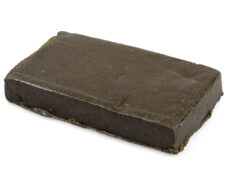Modified on: 12/09/2023
THCP and CBDP: everything you need to know about these two new cannabis Sativa phytocannabinoids
CBD cannabis and “classic” cannabis plants have more than 400 known active ingredients, of which about 150 have been recognized as “cannabinoids.” Among the most well-known cannabinoids are THC and CBD, better known for their therapeutic properties.
In an attempt to define the profile of phytocannabinoids (i.e. natural cannabinoids) that characterize Sativa hemp, a group of European researchers has discovered two new active ingredients: THCP (tetrahydrocannabiphol)and CBDP (cannabidiphol).
Researchers (from the University of Modena and Reggio Emilia, the University of Rome, the University of Camparie and the Institute of Nanotechnology in Lecce) describe in the study, published in the journal Nature, how they isolated the two new Cannabinoids. In between, THCP binds to the CB1 and CB2 receptors of the human endocannabinoid system.
Scientists speculate that this cannabinoid could be 30 times more potent than THC, the known psychoactive component of cannabis and hashish.


The effects of THCP: the active ingredient in cannabis are very similar to THC
During the study, the researchers noted that THCP has a solid affinity for CB1 receptors, about 30 times that of THC. The psychotropic properties of THC are generally associated with its interaction with cb1 receptors in our endocannabinoid system. As a result, THCP could affect our psyche (perhaps to a greater extent than THC).
Scientists have also conducted experiments on laboratory animals. The results were precise. They were able to demonstrate that THCP has a cannabimimetic activity similar to THC, offering almost the same pharmacological effects.
Its effects on the human body have not yet been demonstrated, so for now, only hypotheses can be made and should be confirmed or denied by other studies.
But what is the cannabis activity in THCP?
You should know that the researchers analyzed an extract of medical marijuana FM2 (which has small amounts of THC) produced at the Military Institute of Pharmaceutical Chemistry in Florence. They said that THCP, similar to THC, has analgesic effects and causes hypo-mobility, catalytic and lowers the rectal temperature.
Read also: Is the best marijuana in the world the most potent?
CBDP: a cannabinoid recently discovered by Italian researchers
The researchers said that THC and CBD have a particular chemical structure that shares a lateral atomic chain, which has five carbon atoms arranged linearly.
THCP and CBDP differ between them only in the length of this chain, which contains seven carbon atoms in the same linear arrangement. The length of this chain is responsible for the increased affinity with the CB1 receptor.
But then is CBDP similar to CBD, and has the same beneficial effects, such as painkillers, anxiolytics and antioxidants?
In this case, since the biological activity of CBDP is not yet known, the conjecture cannot be made. Because THCP behaves in the same way as THC, CBDP may also have an activity similar to the CBD.
Good news, but… What do these discoveries mean for the legal and therapeutic marijuana world?


THCP and CBDP: the value of their discovery
The researchers hypothesize that THCP could be the source of the different effects of taking different strains of cannabis. Besides, its presence could explain the therapeutic properties of certain strains of cannabis, which are difficult to justify by the mere presence of THC.
The underlying problem is that no one has ever done any research on these two active ingredients in cannabis. Once the pharmacological profile of THCP is established, it is hoped that cannabis varieties rich in this compound will be developed in the future to treat specific pathologies.
According to the researchers, THCP and CBDP may have an extensive medical application (just like CBD in CBD oil), but for now, the studies are still far from this reality. Further research would, therefore, be needed to understand both the benefits and risks of taking these cannabinoids in pharmacotherapy.
Only future pharmacokinetic studies will be able to reveal this critical information.
The next step in the research conducted by these European researchers is to research THCP and CBDP, not only in FM2 but also in other strains of cannabis. It will be necessary to determine the exact amounts of these cannabinoids to understand the extent of their effect on the human body.
Unfortunately, the process will take quite a long time, as it involves numerous pharmacological tests to assess the beneficial effects and possible risks of taking THCP and CBDP.
Read also: Marijuana Games: here are the best ones
In conclusion
THCP and CBDP are certainly a significant breakthrough for the medical cannabis world, as they could have similar (and perhaps even more relevant) therapeutic effects than THC and CBD, present in CBD flowers.
No one before had ever done this research, and therefore found these cannabinoids, so the studies on them are for the moment quite fuzzy. To prove their benefits and to see all the risks that can arise by taking them, many laboratory tests are needed.
For now, we are celebrating this newest discovery and hope to have more information as soon as possible!









